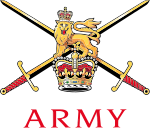The British Army currently operates a number of different vehicles, including:
Challenger 2:
The Challenger 2 is the main battle tank of the British Army. It has been in service since 1998 and is equipped with a 120mm smoothbore gun.
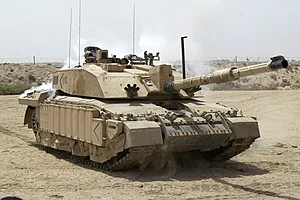
The Challenger 2 is the main battle tank of the British Army, designed and built by the British company Vickers Defence Systems. It was introduced into service in 1998 as an upgraded version of the Challenger 1, and it remains in service today as the backbone of the British Army’s armored forces.
Here are some key facts and features of the Challenger 2:
Armament: The Challenger 2 is armed with a 120mm L30A1 rifled gun, which is capable of firing a range of ammunition types, including armor-piercing rounds and high-explosive shells. It also has a coaxial 7.62mm machine gun and a commander’s 7.62mm machine gun.
Armor: The Challenger 2 is heavily armored with composite armor plating, giving it excellent protection against enemy fire. It is also fitted with a reactive armor system, which can detonate explosive charges to neutralize incoming anti-tank missiles and other threats.
Mobility: The Challenger 2 is powered by a Perkins CV12 diesel engine, which produces 1,200 horsepower. It has a top speed of around 37 miles per hour (60 km/h) and a range of up to 280 miles (450 km) on a single tank of fuel. It also has a hydraulic suspension system, which allows it to adjust its ride height to suit different terrain types.
Crew: The Challenger 2 has a crew of four: a commander, a gunner, a loader, and a driver. The crew is protected by a NBC (nuclear, biological, chemical) protection system and can operate in a sealed compartment for extended periods of time.
Upgrades: The Challenger 2 has undergone a number of upgrades over the years to improve its performance and maintain its effectiveness on the battlefield. Some of these upgrades have included new fire control systems, improved armor protection, and upgraded engine and suspension components.
Overall, the Challenger 2 is a highly capable and well-protected main battle tank that has served the British Army well for over two decades. While it is now being considered for replacement by newer and more advanced tank designs, it remains a key component of the British Army’s armored forces and is likely to remain in service for several more years to come.
Warrior:
The Warrior is an infantry fighting vehicle that is used to transport and support troops in combat. It is equipped with a 30mm RARDEN cannon and can carry up to eight infantry soldiers.
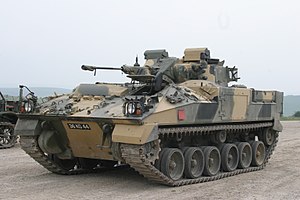
The Warrior is an infantry fighting vehicle (IFV) that is used by the British Army to transport and support troops in combat. It was first introduced into service in the 1980s and has since undergone a number of upgrades to maintain its effectiveness on the battlefield.
Here are some key facts and features of the Warrior:
Armament: The Warrior is armed with a 30mm RARDEN cannon, which is capable of firing armor-piercing rounds and high-explosive shells. It also has a coaxial 7.62mm machine gun and a commander’s cupola with a 7.62mm machine gun.
Protection: The Warrior is heavily armored with composite armor plating, giving it good protection against enemy fire. It is also fitted with a reactive armor system, which can detonate explosive charges to neutralize incoming anti-tank missiles and other threats.
Mobility: The Warrior is powered by a Perkins CV8 diesel engine, which produces 550 horsepower. It has a top speed of around 47 miles per hour (75 km/h) and a range of up to 410 miles (660 km) on a single tank of fuel. It also has a hydraulic suspension system, which allows it to adjust its ride height to suit different terrain types.
Crew: The Warrior has a crew of three: a commander, a gunner, and a driver. It can also carry up to eight infantry soldiers in its rear compartment, which has a rear ramp for quick entry and exit.
Upgrades: The Warrior has undergone a number of upgrades over the years to improve its performance and maintain its effectiveness on the battlefield. Some of these upgrades have included new fire control systems, improved armor protection, and upgraded engine and suspension components.
Overall, the Warrior is a highly capable and versatile infantry fighting vehicle that has served the British Army well for several decades. While it is now being considered for replacement by newer and more advanced IFV designs, it remains a key component of the British Army’s armored forces and is likely to remain in service for several more years to come.
Ajax:
The Ajax is a reconnaissance vehicle that is used for scouting and surveillance missions. It is equipped with a 40mm cannon and a range of sensors and communications equipment.
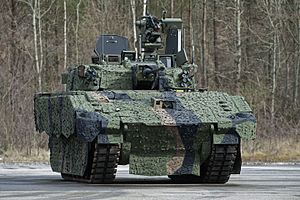
Ajax is a family of armored vehicles designed and built by the British company General Dynamics UK, as part of the British Army’s “Scout SV” program. The vehicles are designed to provide armored reconnaissance and support to ground troops in combat. Here are some key facts and features of the Ajax:
Variants: The Ajax family includes six different variants, each of which is designed for a specific role. These include the Ajax reconnaissance vehicle, the Ares infantry fighting vehicle, the Athena command vehicle, the Apollo recovery vehicle, the Argus engineering vehicle, and the Atlas artillery observation vehicle.
Armament: The Ajax is armed with a 40mm cannon and a 7.62mm machine gun. The exact armament varies depending on the variant, with some versions equipped with additional weapons systems like anti-tank missiles or remote weapons stations.
Protection: The Ajax is heavily armored with composite armor plating, giving it good protection against enemy fire. It is also fitted with a reactive armor system, which can detonate explosive charges to neutralize incoming anti-tank missiles and other threats. The vehicle is designed to withstand mines and improvised explosive devices (IEDs).
Mobility: The Ajax is powered by a Caterpillar C9 diesel engine, which produces 600 horsepower. It has a top speed of around 43 miles per hour (70 km/h) and a range of up to 310 miles (500 km) on a single tank of fuel. It also has a hydropneumatic suspension system, which allows it to adjust its ride height to suit different terrain types.
Crew: The Ajax has a crew of three: a commander, a gunner, and a driver. Depending on the variant, it can also carry additional troops or equipment in its rear compartment.
Upgrades: The Ajax is a relatively new vehicle, having only entered service with the British Army in 2020. As such, it does not yet have a significant history of upgrades or modifications. However, General Dynamics UK has indicated that it plans to continue developing and upgrading the vehicle to meet the evolving needs of the British Army.
Overall, the Ajax is a highly capable and versatile armored vehicle that is designed to provide critical support to ground troops in combat. Its advanced capabilities, including its weapon systems, armor protection, and mobility, make it a valuable addition to the British Army’s armored forces.
Bulldog:
The Bulldog is an armored personnel carrier that is used to transport troops and supplies in combat. It is equipped with a 7.62mm machine gun and can carry up to ten soldiers.
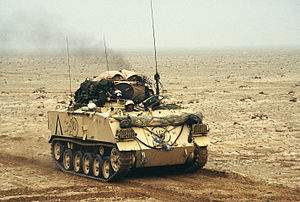
The Bulldog is an armored personnel carrier (APC) that is used by the British Army to transport troops and equipment in combat. It was first introduced into service in the 1960s and has since undergone a number of upgrades to maintain its effectiveness on the battlefield.
Here are some key facts and features of the Bulldog:
Armament: The Bulldog is not armed with any main weapon systems, but it does have a cupola-mounted 7.62mm machine gun for self-defense. Some variants also have smoke grenade launchers and other equipment for battlefield support.
Protection: The Bulldog is heavily armored with steel and aluminum plating, giving it good protection against small arms fire and shrapnel. It can also withstand mine blasts and improvised explosive devices (IEDs).
Mobility: The Bulldog is powered by a Rolls-Royce B80 Mk 7A diesel engine, which produces 240 horsepower. It has a top speed of around 37 miles per hour (60 km/h) and a range of up to 370 miles (595 km) on a single tank of fuel. It also has a hydropneumatic suspension system, which allows it to adjust its ride height to suit different terrain types.
Crew: The Bulldog has a crew of two: a commander and a driver. It can also carry up to ten infantry soldiers in its rear compartment, which has a rear ramp for quick entry and exit.
Upgrades: The Bulldog has undergone a number of upgrades over the years to improve its performance and maintain its effectiveness on the battlefield. Some of these upgrades have included new engines, upgraded armor protection, and improved suspension components.
Overall, the Bulldog is a reliable and versatile armored vehicle that has served the British Army well for several decades. While it is now being considered for replacement by newer and more advanced APC designs, it remains a key component of the British Army’s armored forces and is likely to remain in service for several more years to come.
Mastiff:
The Mastiff (Cougar in the US) is a heavy armored vehicle that is used for convoy protection and troop transport in high-threat environments. It is equipped with a range of defensive systems, including armor plating, blast protection, and mine-resistant features.
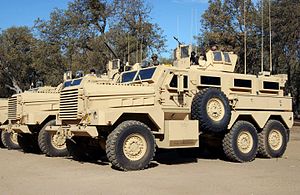
The Mastiff is a heavily armored vehicle used by the British Army for convoy protection and other high-risk operations in combat zones. It was developed in response to the need for better protection for troops against the threat of improvised explosive devices (IEDs) and other roadside bombs.
Here are some key facts and features of the Mastiff:
Armament: The Mastiff is not armed with any main weapon systems, but it does have a cupola-mounted 7.62mm machine gun for self-defense. Some variants also have smoke grenade launchers and other equipment for battlefield support.
Protection: The Mastiff is heavily armored with steel and composite armor plating, giving it excellent protection against small arms fire, shrapnel, and mine blasts. It is also equipped with a reactive armor system that can neutralize incoming anti-tank missiles and other threats.
Mobility: The Mastiff is powered by a Cummins ISLe diesel engine, which produces 320 horsepower. It has a top speed of around 55 miles per hour (90 km/h) and a range of up to 420 miles (675 km) on a single tank of fuel. It also has a hydropneumatic suspension system, which allows it to adjust its ride height to suit different terrain types.
Crew: The Mastiff has a crew of four: a commander, a driver, and two gunners. It can also carry up to eight infantry soldiers in its rear compartment, which has a rear ramp for quick entry and exit.
Upgrades: The Mastiff has undergone a number of upgrades over the years to improve its performance and maintain its effectiveness on the battlefield. Some of these upgrades have included new engines, upgraded armor protection, and improved suspension components.
Overall, the Mastiff is a highly capable and heavily armored vehicle that has proven to be effective in protecting troops in high-risk operations. It is likely to remain in service with the British Army for many years to come, although it is now being supplemented by newer and more advanced armored vehicle designs.
The British Army also operates a number of other armored vehicles, including the AS-90 self-propelled artillery, the FV432 armored personnel carrier, and the CVR(T) series of reconnaissance vehicles.
AS-90
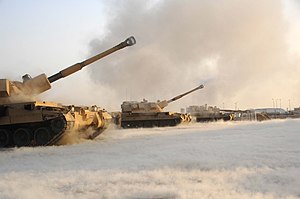
The AS-90 is a British 155mm self-propelled howitzer that was designed and built by the Vickers Defense Systems (now part of BAE Systems Land & Armaments). It was introduced into service in the early 1990s and has been used by the British Army in several conflicts, including the Gulf War and the Iraq War.
Here are some key features and specifications of the AS-90:
Crew: The vehicle is operated by a crew of five, including a commander, driver, gun layer, loader, and ammunition handler.
Armament: The AS-90 is equipped with a 155mm L31 howitzer that can fire a variety of munitions, including high explosive, smoke, and illumination rounds. It has a maximum range of around 18 miles (30 kilometers) and can fire up to three rounds per minute.
Protection: The vehicle has a welded steel armor hull that provides protection against small arms fire and shell splinters.
Mobility: The AS-90 is powered by a Cummins 660 diesel engine that can produce up to 660 horsepower. It has a top speed of around 34 miles per hour (55 km/h) and a range of up to 180 miles (290 km) on roads.
Dimensions: The AS-90 has a length of around 33 feet (10 meters), a width of around 10 feet (3 meters), and a height of around 10 feet (3 meters). It weighs around 48 tons (44 metric tons).
Variants: There are several variants of the AS-90, including the AS-90 Braveheart, which is a modified version that is equipped with an extended-range gun and can fire the Guided Multiple Launch Rocket System (GMLRS).
The AS-90 has been used by the British Army in several conflicts, including the Gulf War, the Kosovo War, and the Iraq War. It has also been exported to several other countries, including Kuwait, Saudi Arabia, and Oman. The AS-90 is expected to be replaced by the British Army’s new 155mm wheeled howitzer, the M777, in the coming years.
FV432
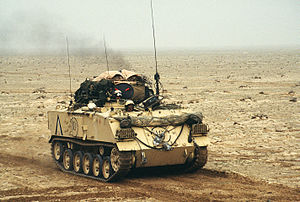
The FV432 is a tracked armored personnel carrier (APC) that was originally designed and produced in the United Kingdom by GKN Sankey (now part of BAE Systems Land & Armaments). It was first introduced in the 1960s and was widely used by the British Army and other militaries around the world.
Here are some key features and specifications of the FV432:
Crew: The vehicle can carry a crew of two (driver and commander) and up to ten passengers.
Armament: The FV432 can be equipped with a variety of weapons, including a pintle-mounted machine gun or a 106mm recoilless rifle.
Protection: The vehicle has an all-welded steel armor hull that provides protection against small arms fire and shell splinters.
Mobility: The FV432 is powered by a Rolls-Royce K60 6-cylinder, 2-stroke, multifuel engine that can produce up to 240 horsepower. It has a top speed of around 32 miles per hour (50 km/h) and a range of up to 280 miles (450 km) on roads.
Dimensions: The FV432 has a length of 17.5 feet (5.3 meters), a width of 9.25 feet (2.8 meters), and a height of 8.5 feet (2.6 meters). It weighs around 15.5 tons (14 metric tons).
Variants: There are several variants of the FV432, including the FV432/1, which has an extended rear section for additional cargo space, and the FV434, which is a modified version that is equipped with a 30mm Rarden cannon.
The FV432 has been used in a variety of roles, including as a personnel carrier, ambulance, command vehicle, and artillery tractor. It has seen combat in several conflicts, including the Gulf War and the Falklands War, and remains in service with several militaries around the world today.
CVR(T)
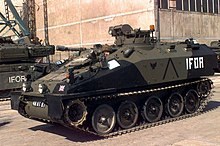
The CVR(T) is a family of light armored vehicles designed and produced in the United Kingdom by Alvis (now part of BAE Systems Land & Armaments). The initials stand for Combat Vehicle Reconnaissance (Tracked), and the vehicles were introduced into service in the late 1970s.
Here are some key features and specifications of the CVR(T):
Crew: The vehicles in the CVR(T) family can carry a crew of up to three, including a driver, commander, and gunner.
Armament: The CVR(T) can be equipped with a variety of weapons, including a 30mm Rarden cannon, a 7.62mm machine gun, or a TOW anti-tank missile launcher.
Protection: The vehicle has an all-welded aluminum armor hull that provides protection against small arms fire and shell splinters.
Mobility: The CVR(T) is powered by a range of different engines, depending on the variant, including a Jaguar J60 4.2 liter 6-cylinder petrol engine or a Cummins BTA 5.9 liter 6-cylinder diesel engine. It has a top speed of around 50 miles per hour (80 km/h) and a range of up to 400 miles (640 km) on roads.
Dimensions: The CVR(T) has a length of around 16.5 feet (5 meters), a width of around 8.2 feet (2.5 meters), and a height of around 7.5 feet (2.3 meters). It weighs around 7.5 tons (6.8 metric tons).
Variants: There are several variants of the CVR(T), including the Scorpion, Scimitar, Spartan, Sultan, Samaritan, Striker, and Stormer.
The CVR(T) family of vehicles has been used in a variety of roles, including as a reconnaissance vehicle, artillery observation vehicle, command vehicle, and anti-tank vehicle. It has seen combat in several conflicts, including the Falklands War and the Gulf War, and remains in service with several militaries around the world today. It has also been modified for use in civilian roles, such as law enforcement and counter-terrorism.
What about the Challenger 3 and others in development?
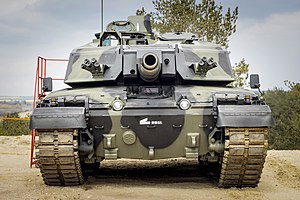
Challenger 3 is a main battle tank that is currently under development by BAE Systems Land & Armaments for the British Army. The tank is designed to replace the Challenger 2, which has been in service since the 1990s. Here are some key features and specifications of the Challenger 3:
Crew: The tank will be operated by a crew of four, including a commander, gunner, loader, and driver.
Armament: The Challenger 3 will be equipped with a 120mm L55 smoothbore gun, which is capable of firing a variety of ammunition types, including kinetic energy penetrators and high-explosive anti-tank rounds. It will also be fitted with a coaxial 7.62mm machine gun and a 12.7mm remote weapons station.
Protection: The tank will have advanced composite armor and modular protection systems, including explosive reactive armor (ERA) and an active protection system (APS). It will also have a laser warning system and a battlefield management system.
Mobility: The Challenger 3 will be powered by a new 1,500 horsepower engine and have an improved suspension system, allowing it to travel at speeds of up to 40 miles per hour (64 km/h) and negotiate difficult terrain.
Dimensions: The tank is expected to have a length of around 8.3 meters (27 feet), a width of around 3.5 meters (11.5 feet), and a height of around 2.5 meters (8.2 feet). Its weight is expected to be around 70 tons (63 metric tons).
Boxer
– an eight-wheeled armored vehicle designed to provide a variety of support roles to the British Army, including troop transport, ambulance, and command post.
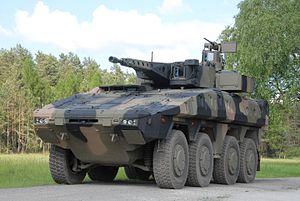
The Boxer is an eight-wheeled armored vehicle developed by the German company ARTEC GmbH, in cooperation with Rheinmetall and Krauss-Maffei Wegmann. The vehicle is designed to be highly modular and can be adapted for various mission roles, including troop transport, ambulance, command post, and reconnaissance. The Boxer is currently in service with several countries, including Germany, the Netherlands, and Lithuania, with the United Kingdom being the latest country to join the program.
The British Army’s Boxer variant is called the Mechanised Infantry Vehicle (MIV), and it is being procured through a £2.3 billion contract with ARTEC. The MIV will be produced in three main variants: the Infantry Carrier Vehicle (ICV), the Specialist Carrier Vehicle (SCV), and the Command and Control Vehicle (C2V).
The ICV variant will provide protected transport for up to eight infantry soldiers and their equipment, while the SCV variant will be adapted for a range of roles, including mortar carrier, engineering vehicle, and ambulance. The C2V variant will provide a command and control center for troops in the field.
The Boxer has a modular design, which means that it can be easily reconfigured for different mission roles. The vehicle’s modules can be changed in the field, allowing for rapid adaptation to changing mission requirements. The Boxer’s modular design also makes maintenance and repair easier and more cost-effective.
The vehicle is powered by a 530 horsepower diesel engine and has a top speed of 60 miles per hour. The Boxer is also designed for high mobility and can operate in a wide range of terrains, including urban environments and off-road terrain. The vehicle’s high level of protection is achieved through a combination of armor, including advanced composite armor and a blast-resistant hull.
Overall, the Boxer is a highly capable and versatile armored vehicle that offers the British Army significant advantages in terms of mobility, protection, and mission flexibility.
Warrior CSP
– an upgrade to the existing Warrior armored vehicle, designed to improve its firepower, protection, and mobility.
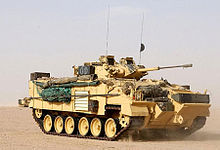
The Warrior Capability Sustainment Programme (CSP) is an upgrade to the existing Warrior infantry fighting vehicle (IFV) used by the British Army. The Warrior CSP is designed to improve the vehicle’s firepower, protection, and mobility, while also enhancing its situational awareness and communication capabilities.
The Warrior IFV has been in service with the British Army since the 1980s, and the CSP program is intended to extend the vehicle’s service life by upgrading its key systems and components. The program is being led by Lockheed Martin UK, with several other UK-based companies also involved in the development and production of the upgraded vehicle.
The upgrades to the Warrior CSP include a new turret that features a 40mm cannon, as well as an improved sighting system that enhances the vehicle’s accuracy and lethality. The vehicle’s armor has also been improved to provide greater protection against modern anti-tank weapons, and the Warrior CSP also features a new electronic architecture that allows for the integration of modern communication and situational awareness systems.
The mobility of the vehicle has been enhanced through the addition of a new powerpack, which provides greater power and reliability. The suspension system has also been upgraded to provide better off-road performance and handling.
The Warrior CSP is being produced in four main variants: the Infantry Section Vehicle, the Command and Liaison Vehicle, the Repair and Recovery Vehicle, and the Joint Fires Vehicle. The Infantry Section Vehicle is the primary variant, and it is designed to transport up to eight fully equipped soldiers into combat.
The Warrior CSP program is expected to extend the service life of the vehicle until at least the 2040s, providing the British Army with a modern and highly capable IFV for years to come.

